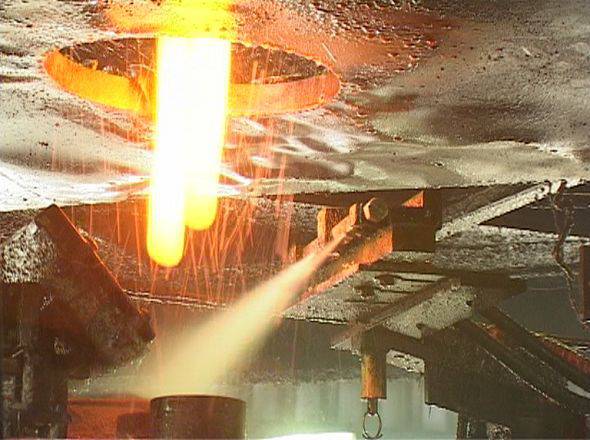Vitrifiable mixture
Glass is obtained by fusion in a very high temperature furnace of an homogenous mixture of minerals (vitrifiable mixture), called primary materials, which are mixed in appropriate proportions in weight, and glass scraps.
Additions of primary materials are calculated in weight, with 100 kg of sand being the frame-point. All the mixture components are in powder form and the dimensions of the particles are very important for the achievement of the fusion. If the powders are too fine, there are problems associated with powdering, that is, the dispersion of the product in the fusion chamber and the environment through smoke, before it has time to react.
If, on the other hand, the particles are too big, there are problems associated with mixture homogeneity; the silica, the highest-smelting primary material, is the most delicate from this perspective. Particles which are too big do not smelt; particles which are too fine can segregate (packed) and, not mixing homogenously with the other primary materials, are also rendered infusible. The homogeneity of the mixture is very important and, to aid it along, in addition to the dimensions of the particles of each primary material (particle-size analysis), what is fundamental is the quality of the mixture and the addition of a small quantity of water (2-4%) which prevents separation between the phases.
Up until the end of the 18th century, plant ash, silica and few other compounds were basically the only components of the mixture. But, since the development of modern chemistry, even the glass industry made rapid progress and its products reached a high level of diversification and perfection at the end of the 19th century. On the one hand, the development of heat theory has given glass works the possibility to use other types of fuel instead of wood; on the other hand, the chemical industry has created new refractory materials which can resist at higher temperatures and new cheaper primary materials. The most important amongst these are definitely the alkaline synthesis compounds, which are indispensable for the smelting of the silica.

